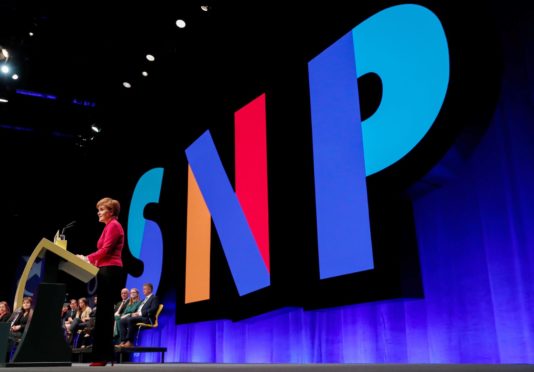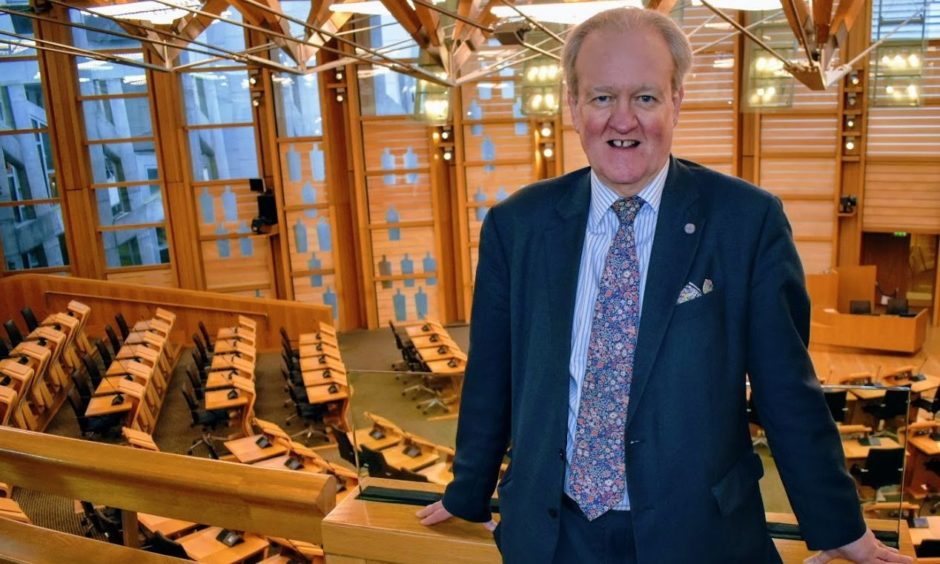Nicola Sturgeon and her husband Peter Murrell’s grip on the SNP is under threat from an influx of new blood to powerful positions in the party.
The election of new faces on the party’s ruling body could have profound implications for its independence strategy and its stance on the emotive issue of gender recognition.
One prominent SNP member has hailed the SNP’s internal contest for places on its National Executive Committee (NEC) as the “biggest internal sea change” witnessed by the party for more than 40 years.
Chris McEleny, the Inverclyde councillor who is one of the party’s most vocal campaigners for an independence plan B, claimed the results reflected the SNP membership’s desire for an alternative referendum strategy.
And SNP insiders claimed the shake-up would put pressure on Ms Sturgeon and Mr Murrell as leader and chief executive of the party, respectively.
Party members have overwhelming voted for the party to explore alternative options to ensure the democratic voice of Scotland is heard. The party leadership must reflect carefully on this result and respond to this call for change.”
Councillor Chris McEleny of the SNP
Hanlon victory may signal frustration
Perhaps the biggest upset of the election, held at the end of the SNP’s virtual party conference, was the defeat of Alyn Smith, the Stirling MP and former MEP, in the race to become policy development convener.
Mr Smyth was beaten by hardworking, yet relatively unknown, activist Chris Hanlon, who lacks the MP’s national profile.
From a policy point of view, SNP insiders claimed Mr Hanlon’s victory was a sign that the membership is growing impatient with the cautious approach taken to a second independence referendum – in particular the leadership’s strong preference for a strategy that includes Westminster granting permission for a vote via a Section 30 order, as in 2014.
Nicola Sturgeon confirms party will campaign on another independence referendum
In newspaper articles Mr Smith has been critical of the notion of a plan B, which have been put forward by independence hardliners in anticipation of Boris Johnson continuing to oppose indyref2 even if the SNP win a majority in May’s Scottish election.
The fact that Mr Smith was beaten by a relatively unknown individual has been interpreted in some quarters as a backlash against his position on plan B.
The election of Joanna Cherry QC, MP for Edinburgh South West, to the NEC is cited as further evidence that change is afoot.
Ms Cherry is of the view that if Westminster continues to block a second poll, then Holyrood should produce its own referendum legislation, which could then be tested in the courts. Those in the know claim that as a result of recent election the new configuration of the NEC contains a majority in favour of that approach.
There’s a clear mandate for change in @theSNP & the leadership would do well to listen to the voice of the grassroots #SNPConference2020 #NEC results https://t.co/JT5QMzBxRs
— Joanna Cherry QC (@joannaccherry) November 30, 2020
Race for president…
Another sign of the restlessness in the grassroots was the large number of votes gathered by Craig Murray in the contest to become president of the party.
Mr Murray, a former diplomat, called for a referendum in September and for independence to be delivered within two years.
Despite being seen as a controversial character, Mr Murray polled one in four votes of SNP members in the contest – a strong showing that illustrates substantial support for his approach.
Ultimately, however, the decision of the veteran politician and Cabinet Secretary Michael Russell to stand in the contest ensured he did not win. Mr Russell, who is stepping down from Holyrood at the May election, will take over from Ian Hudgton as president.
Another sign of challenge to the status quo was the defeat of long-standing Treasurer Colin Beattie MSP. Mr Beattie, who was the preferred candidate of Deputy First Minister John Swinney, was beaten by Douglas Chapman, MP for Dunfermline and West Fife.
Delighted to vote for Colin Beattie as @theSNP National Treasurer. His hard work and sound stewardship of our finances has made all our campaign success possible. Let’s keep it going.
— John Swinney (@JohnSwinney) November 28, 2020
The powerful position of national secretary went to the veteran nationalist Stewart Stevenson, who is also quitting the Scottish Parliament next year. Mr Stevenson, who represents Banffshire and Buchan Coast, defeated Lorna Finn, who was seen as the leadership’s favoured candidate.
In his younger days, Mr Stevenson was a member of the SNP’s 79 Group, a faction within the party named after its year of foundation which included Alex Salmond and Kenny MacAskill.
The group of left wingers was expelled from the party after being critical of the leadership. Eventually the group was readmitted, a move that was to have a deep influence of the future of the party.
Mr McEleny compared this week’s election with that moment.
“This is the biggest internal sea change since the readmission of the ’79 group members in the 1980s,” Mr McEleny claimed.
“Party members have clearly voted for change by electing a raft of NEC candidates that want to see more vibrant policy debate engaged and a much more radical policy position adopted by the party.
“The strategy of accepting the Boris veto of a section 30 request was on the ballot paper and party members have overwhelming voted for the party to explore alternative options to ensure the democratic voice of Scotland is heard. The party leadership must reflect carefully on this result and respond to this call for change.”
Controversy over gender recognition and trans rights
The other area of policy where the changes will have most impact is on the Scottish Government’s highly controversial Gender Recognition Act (GRA), which would allow people to self-declare their gender identity.
This issue is splitting the SNP with many members objecting to the legislation. Among the critics are Ms Cherry and the SNP councillor Caroline McAllister, who was elected as the party’s women’s convener.
Ms McAllister has been one of the SNP figures leading a backlash against the GRA and was a founder of the SNP’s Women Pledge group, which opposes the reforms, which allow Scots to change gender without medical treatment.
She defeated the incumbent, Rhiannon Spear, an advocate of transgender rights. Similarly, Councillor Lynne Anderson, who has raised concerns about the GRA, was elected as equalities convener.
So expect more on gender recognition and indyref2 as the countdown to May’s Scottish election begins in earnest this year.
On the latter, the new-look NEC is likely to make alternative independence strategies when the party’s National Assembly is held early in the New Year. There are many SNP members who would like to throw down the gauntlet to the leadership and see the party crystallise a position on this ahead of pre-election conference in the spring.

